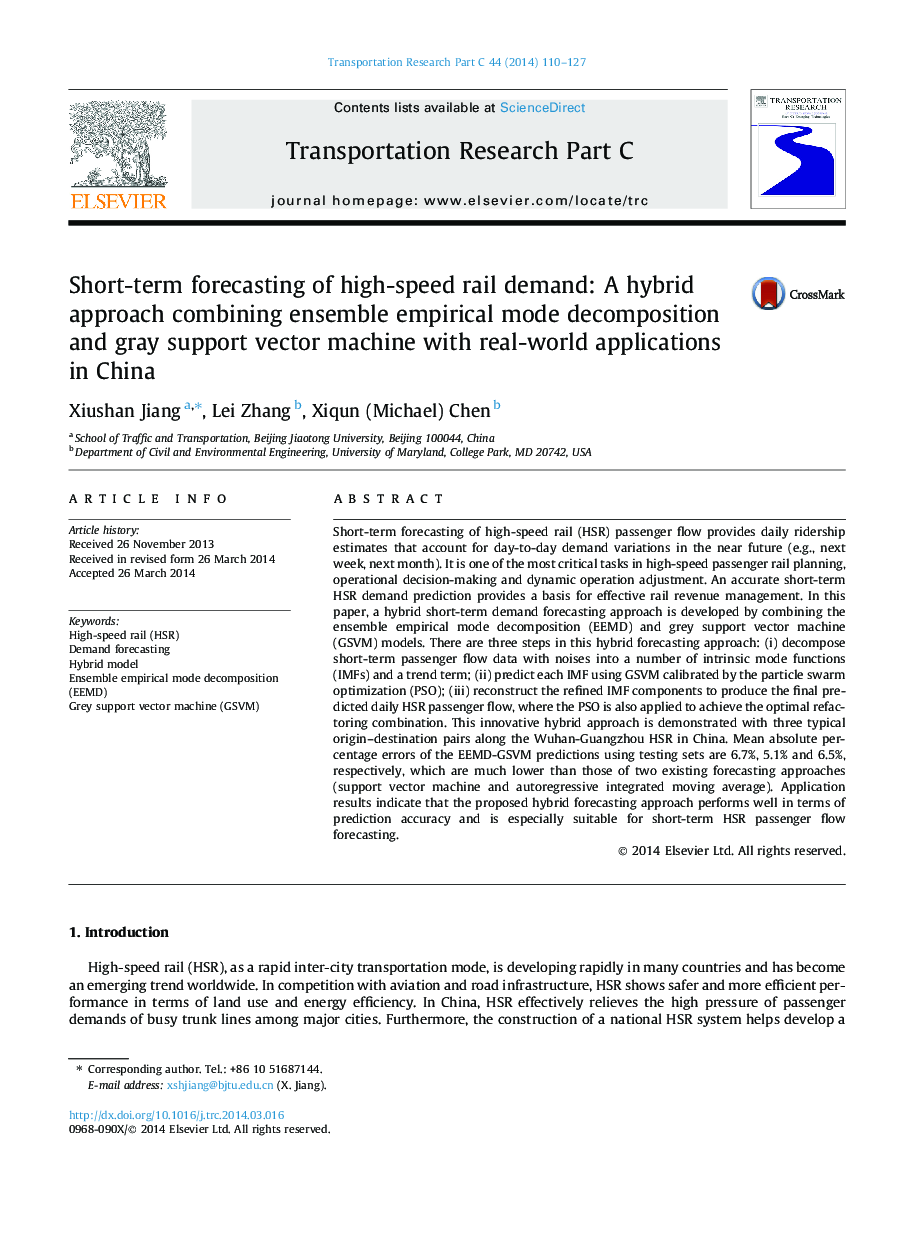| کد مقاله | کد نشریه | سال انتشار | مقاله انگلیسی | نسخه تمام متن |
|---|---|---|---|---|
| 524790 | 868859 | 2014 | 18 صفحه PDF | دانلود رایگان |
• We observe oscillated, nonlinear and non-stationary features of HSR flows.
• We propose a hybrid approach combining EEMD and GSVM for short-term prediction of HSR flows.
• We use mode reconstruction instead of a simple summation of each IMF.
• We apply the approach to a real-world HSR in China.
Short-term forecasting of high-speed rail (HSR) passenger flow provides daily ridership estimates that account for day-to-day demand variations in the near future (e.g., next week, next month). It is one of the most critical tasks in high-speed passenger rail planning, operational decision-making and dynamic operation adjustment. An accurate short-term HSR demand prediction provides a basis for effective rail revenue management. In this paper, a hybrid short-term demand forecasting approach is developed by combining the ensemble empirical mode decomposition (EEMD) and grey support vector machine (GSVM) models. There are three steps in this hybrid forecasting approach: (i) decompose short-term passenger flow data with noises into a number of intrinsic mode functions (IMFs) and a trend term; (ii) predict each IMF using GSVM calibrated by the particle swarm optimization (PSO); (iii) reconstruct the refined IMF components to produce the final predicted daily HSR passenger flow, where the PSO is also applied to achieve the optimal refactoring combination. This innovative hybrid approach is demonstrated with three typical origin–destination pairs along the Wuhan-Guangzhou HSR in China. Mean absolute percentage errors of the EEMD-GSVM predictions using testing sets are 6.7%, 5.1% and 6.5%, respectively, which are much lower than those of two existing forecasting approaches (support vector machine and autoregressive integrated moving average). Application results indicate that the proposed hybrid forecasting approach performs well in terms of prediction accuracy and is especially suitable for short-term HSR passenger flow forecasting.
Journal: Transportation Research Part C: Emerging Technologies - Volume 44, July 2014, Pages 110–127
